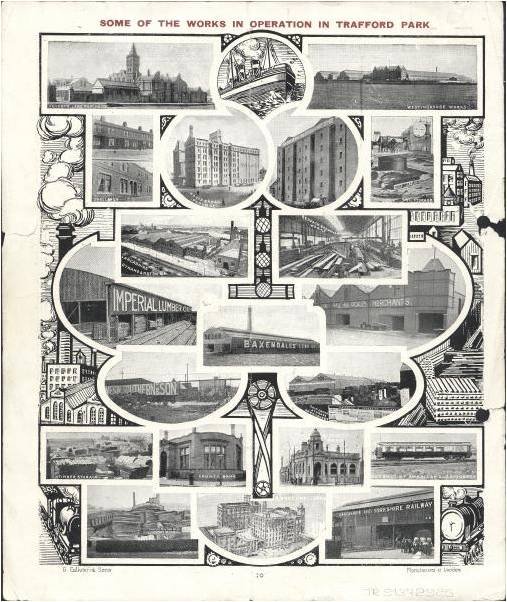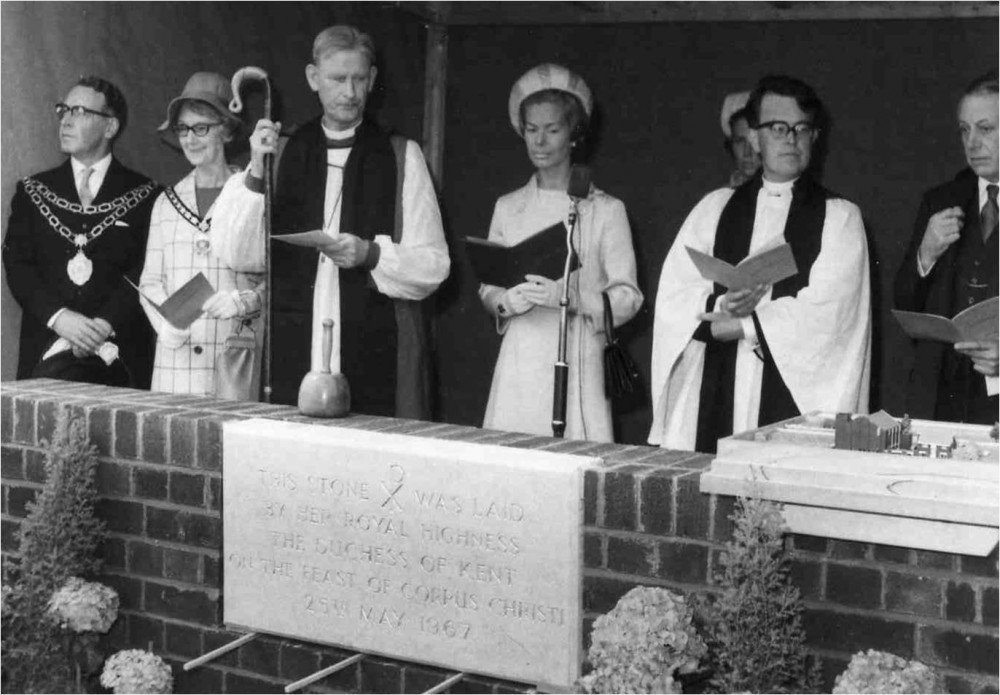
Our church history
Our church building was built by local people so they would have a place to worship God. It may be a modern building but it’s a site that is rich in history.
Our history
Christ Church’s origins can be traced back over 800 years.
Pre-Industrial Revolution
Davyhulme, Urmston and Flixton have not always been the suburban area we know today. In the mid 18th century, before the Industrial Revolution, they were remote rural communities whose way of life had changed little for hundreds of years. Davyhulme itself was a small hamlet of farms and remote cottages.
The parish church was St. Michael’s Church at Flixton which dates back to the 12th Century and is built on the site of an even earlier priory. 800 years ago the inhabitants would have had to walk great distances across footpaths and fields, carrying lanterns after dark, to go to church.
Rapid change during the Industrial Revolution
During the Industrial Revolution the local rural community began to change. In 1830 the world’s first passenger railway, between Manchester and Liverpool, was built which skirted around the local area. At the same time, Flixton and Urmston began to expand and the need arose for another church. St. Clement’s Church in Urmston was built in 1867.
By 1873 the Cheshire Lines had built a railway from Manchester to Warrington with stations at Urmston and Flixton. This opened up the possibility of commuting and the better transportation of goods in and out of the area. The population continued to expand so that by 1889 the foundation stone of yet another parish church, St. Mary the Virgin, was laid to serve the new parish of Davyhulme.
Industrial expansion following the Manchester Ship Canal
By this point the three parishes were still relatively free from industry and rural in nature. Davyhulme was the most rural with many farms and cottages. However, in 1894 the Manchester Ship Canal opened and with it began the changes which made the Davyhulme we know today.
The route of the Ship Canal was planned through the estate of Sir Humphrey de Trafford, whose family had owned land in and around Davyhulme since 1219 and after whom the local authority area of Trafford is named. He lived in Trafford Hall on the Trafford estate, which is roughly the area now known as Trafford Park industrial estate. He died before the completion of the canal and his son Sir Humphrey Francis de Trafford sold part of his land in 1889 to Manchester Corporation to build the Davyhulme Sewerage Works which served the ever expanding population of the industrialised city.
Sir Humphrey Francis continued to sell off the rest of the estate in 1900 for industrial development which would eventually lead to one of the largest concentrations of industry and engineering in the world right next door to the three parishes of Urmston, Flixton and Davyhulme.
A population boom
Skilled workers came from all over to work in "The Park," as the industrial area became known, and the local population expanded rapidly. Until 1930 Davyhulme remained the more rural area, abounding in country walks through fields and meadows; but during the 1930s an expansion in building took place. The Second World War halted building for about a decade so the Davyhulme estate was completed in the 1950s.
This expansion increased the number of parishioners at St Mary’s, though the church was some distance from the newly built estate, which probably explains why the estate’s original plans contained planning permission for a new church. In 1943, the vicar of St. Mary’s opened a Sunday School in Canterbury Road School (now Davyhulme Primary School) which was a great success having a membership of 200 by 1954.
A new church is needed
Subsequently it was decided to open a "Mission Church" of St Mary’s to serve the community around the new development in the east of the parish. This was a temporary brick and timber construction on Whalley Avenue alongside where the M60 motorway now runs.
It was in use for 15 years but by 1959 it was obvious that the area needed to be a parish in its own right and the Conventional District of Christ Church, Davyhulme was formed.
In 1963 the first meeting of the new church committee took place and by mid 1964 architectural plans for the new building were being developed - with various plans and models for a new, modern building being considered. In 1965 the new site on Lostock Road was given planning permission.
Around the same time, Moss Farm (between Kingsway Park and the motorway) was developed as a new housing estate, increasing the size of the parish further.
Building the new church building
The foundation stone for the new church was laid by Her Royal Highness the Duchess of Kent on 25th May 1967, the Feast of Corpus Christi.
After all the excitement of planning and the laying of the foundation stone, instead of building work commencing there was a setback. It became apparent, after accurate costings, that the Architects plans were too costly by about £15,000. Therefore, in early 1968 a new Architect was appointed with a less ambitious scheme. The contractors commenced work in September of that year and by May 1969 the walls and roof were up.
September 28th 1969 saw the last Service at the old Mission Church, which was subsequently sold in 1970 and financed the building of the Parish Centre.
On Saturday October 4th 1969 the new parish church of Christ Church, Davyhulme was consecrated by the Lord Bishop of Manchester. This is the church we still gather to meet in today.
Further expansion to Davyhulme parish
In 2017 the parish boundary was extended on the northern side to a boundary at the Manchester Ship canal and to the east to the Bridgewater Canal. This means today, as well as the residential area of Davyhulme, the parish incorporates the Trafford Centre and the future Trafford Waters, an area currently under development where 5,000 new homes are planned to be built over the coming decade.
An expansion of a different kind took place in 2021 when a church revitalisation took place. A group of people joined the existing church family to begin a new chapter in the exciting story of Christ Church Davyhulme.
This story continues today by God’s grace. Davyhulme remains a dynamic and exciting place to live and worship, and Christ Church aims to be right at the heart of this growing community.
A more detailed history of the early years of Christ Church is available in the book ‘Our Living Church’. Written in 1979, this book celebrated the first 10 years of our church building being open.
Around the church building
-

The Stained Glass Windows
Our four north-facing windows fill the building with rich, symbolic colour. Designed by Kenneth Bunton, each abstract design represents one of Jesus’s “I am” statements from John’s Gospel. These sayings teach us about Jesus’ nature and what life with him is like.
From left to right:
I AM THE GOOD SHEPHERD. The design represents the contorted body of the shepherd, pierced with flaming spearheads of pain. This window was a gift of the Sunday School.
I AM THE BREAD OF LIFE. The green and yellow pattern represents a growing field of wheat. This window was a gift of the Women’s Fellowship.
I AM THE WAY, THE TRUTH AND THE LIFE. This shows a road curving upwards. This window was the gift of the Mothers’ Union.
I AM THE RESURRECTION AND THE LIFE. This design shows radiant colours surging upwards and outwards. This window was a gift of the Sewing Guild.
On the other side of the church, the plain glass facing Lostock Road was a conscious decision by the designer. Not only could the congregation look out to the busy road and the parish, but that also those passing by should be able to see into the church. This makes it a building open to the community in which it was situated.
-

The 25th Anniversary Banner
For our silver Jubilee members of Christ Church produced a wall hanging bearing 12 inch squares representing each of the church’s organisations and groups at that time.
The 20 squares depict the following:
The vicarage
The churchwardens
The vicar
The readers and lay assistants
The music group
The prayer group
The flower guild
The Mother’s Union
The spanners
Bible groups
The European Scout federation
The playgroup and Kids & Co
The Church Lads and Church Girls Brigades
Sunday school
The 4th Davyhulme Guides
The 3rd Davyhulme (Lostock) Scout Group
The women’s fellowship
The thanksgiving and pastoral link project
The Wednesday afternoon social club
The cup that cheers
-

The Large Cross
The cross hanging at the front of the main worship area grabs your attention as you walk in. Made in perspex and wood, this cross was designed by the prolific and renowned sculptor Josaphina de Vasconcellos.
For several years it hung in St. Martin’s in the Fields in London, and then was exhibited in St. Pauls Cathedral, London and Liverpool Cathedral. Josephina produced many sculptures including “The Holy Family”, which is on display in Manchester Cathedral.
-

The Bell
The church bell, which is visible outside the church, was a gift of the provost and fellows of King’s College Cambridge. It was rung in the chapel at King’s College from 1616 to 1946.
It is now rung each Sunday morning at Christ Church letting local people know our service will begin shortly.




